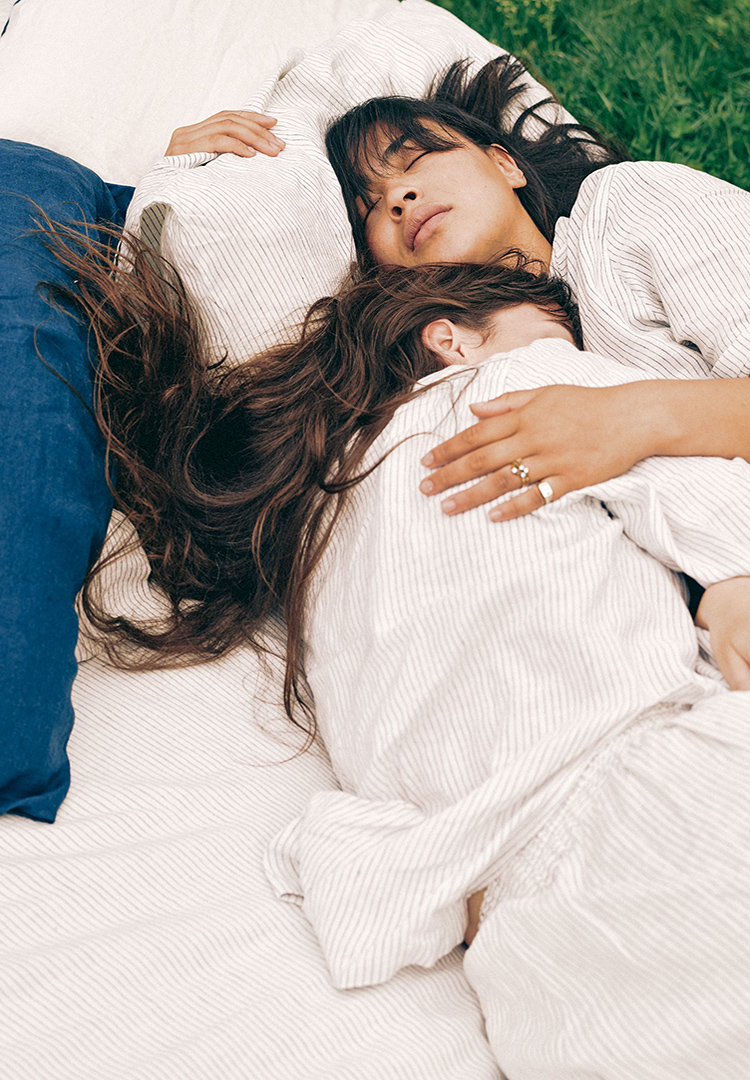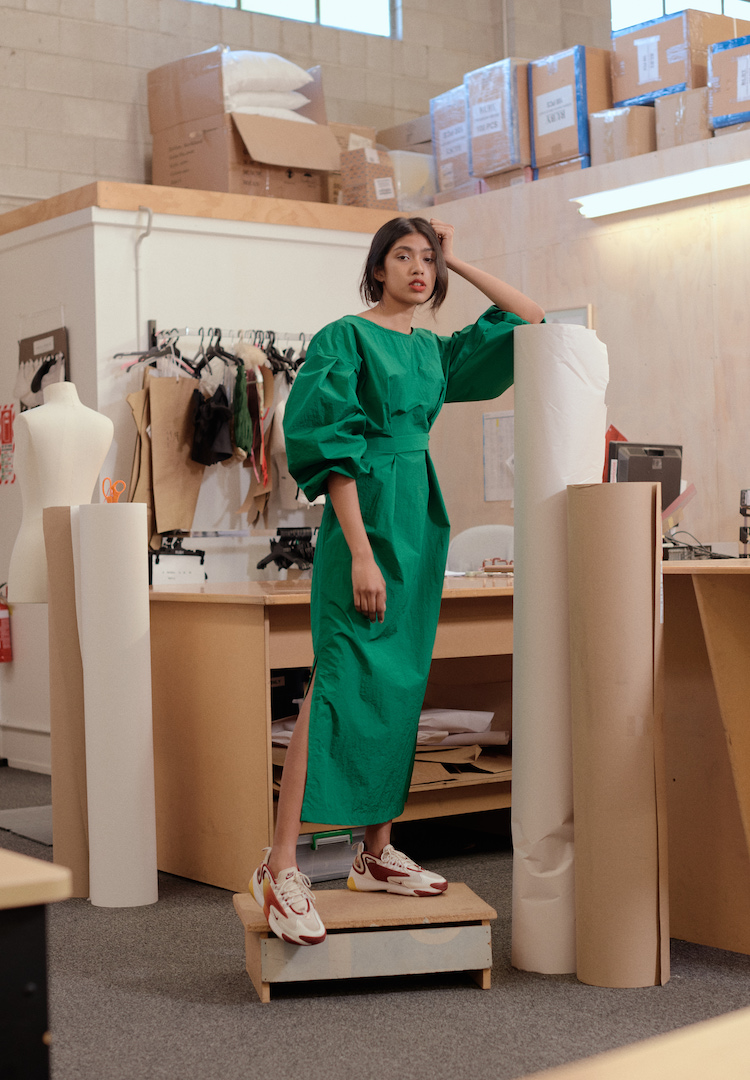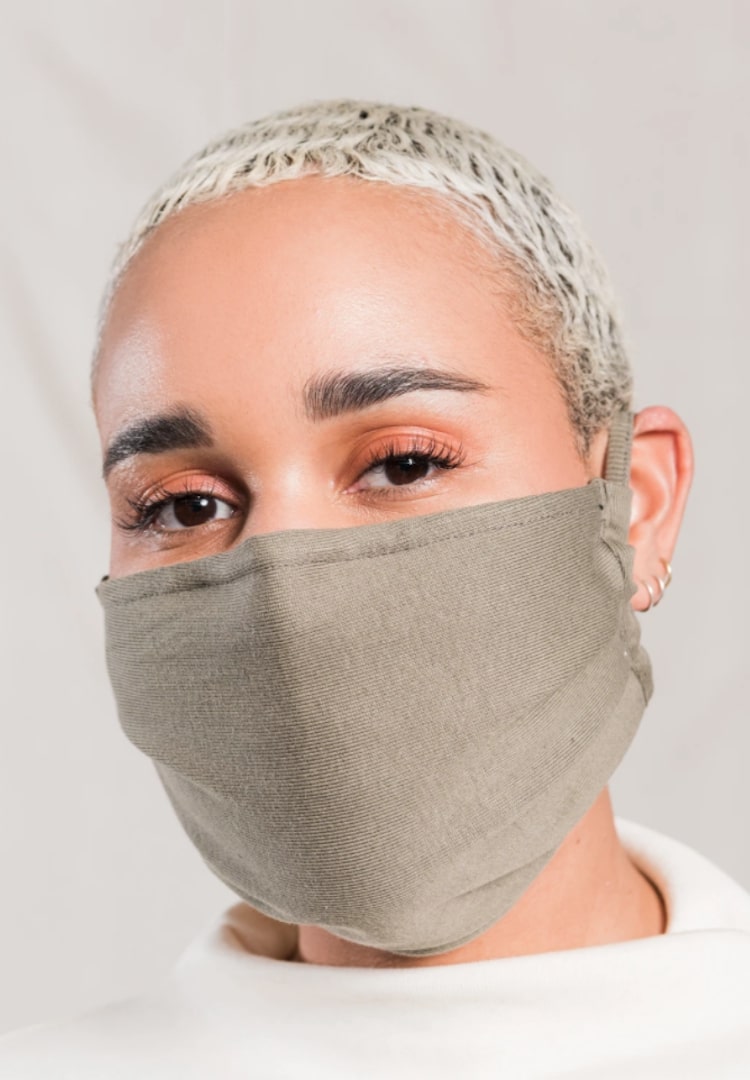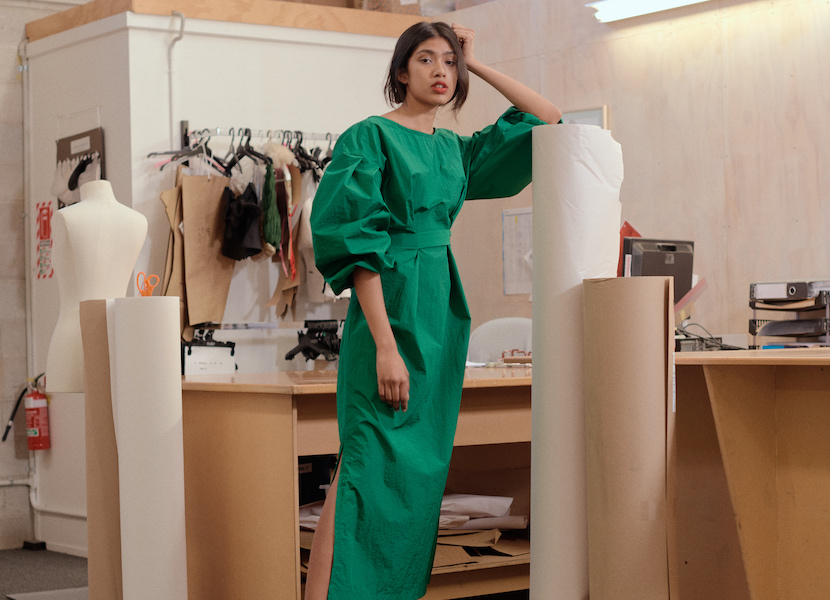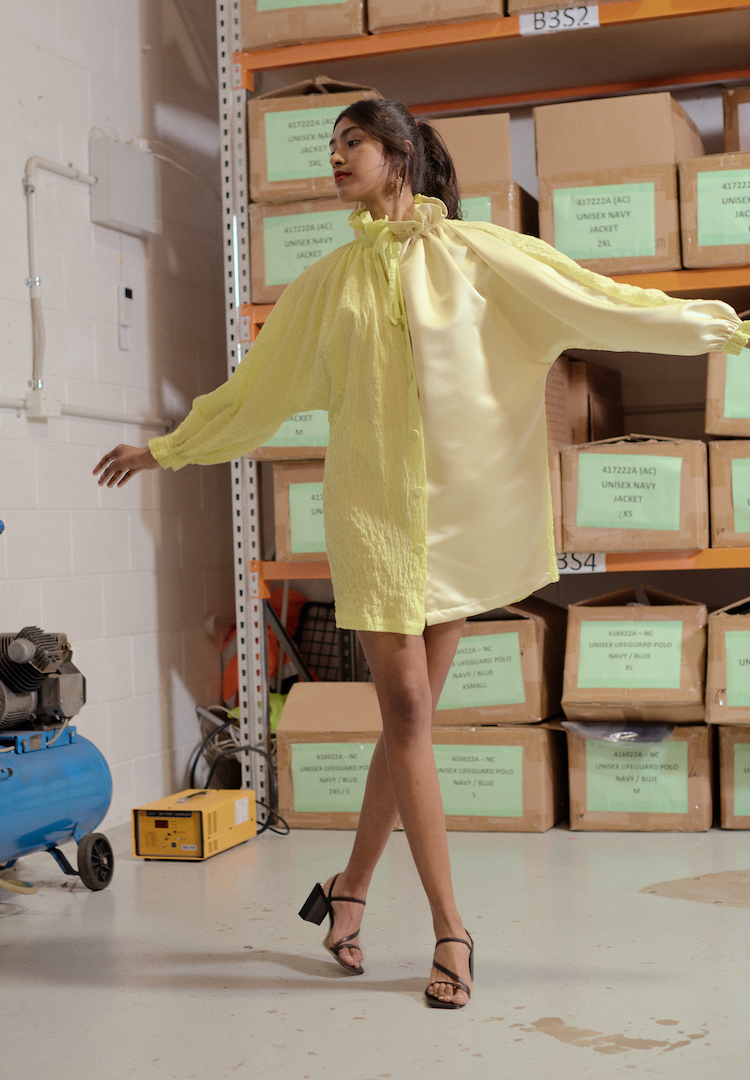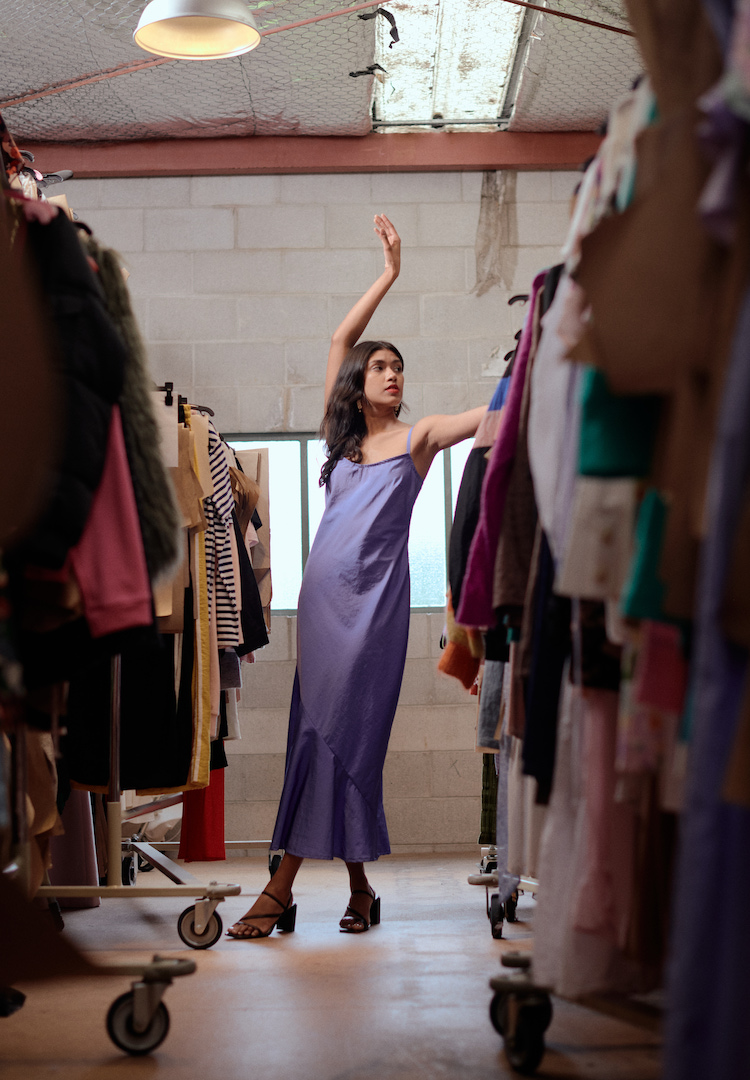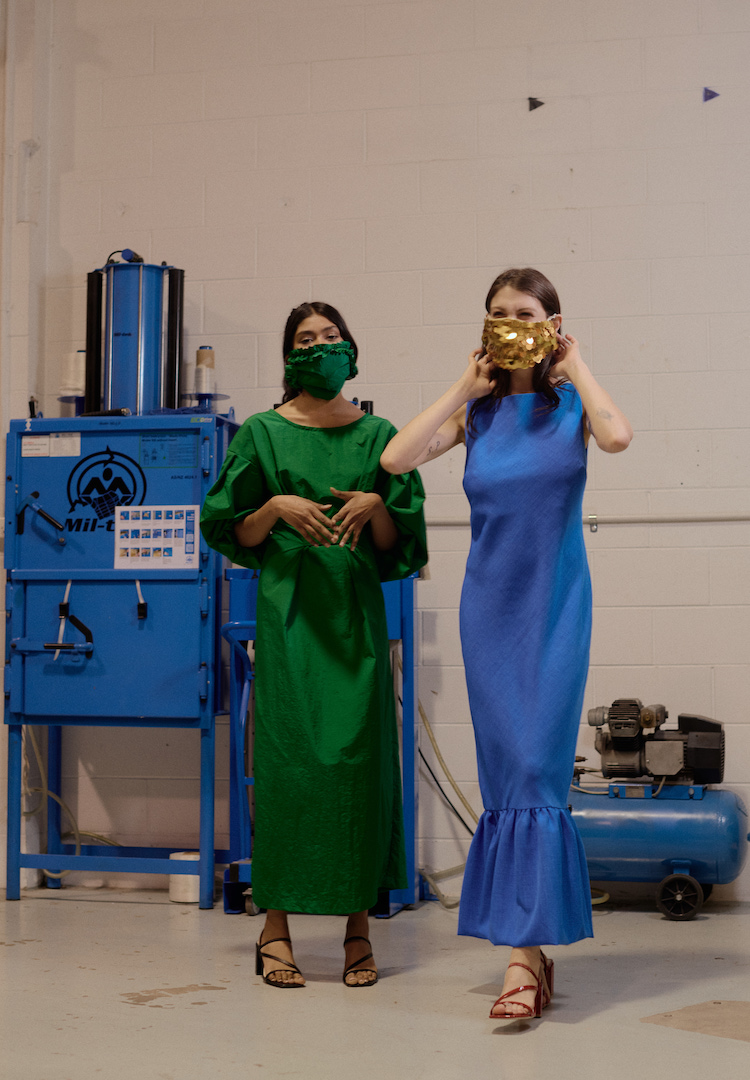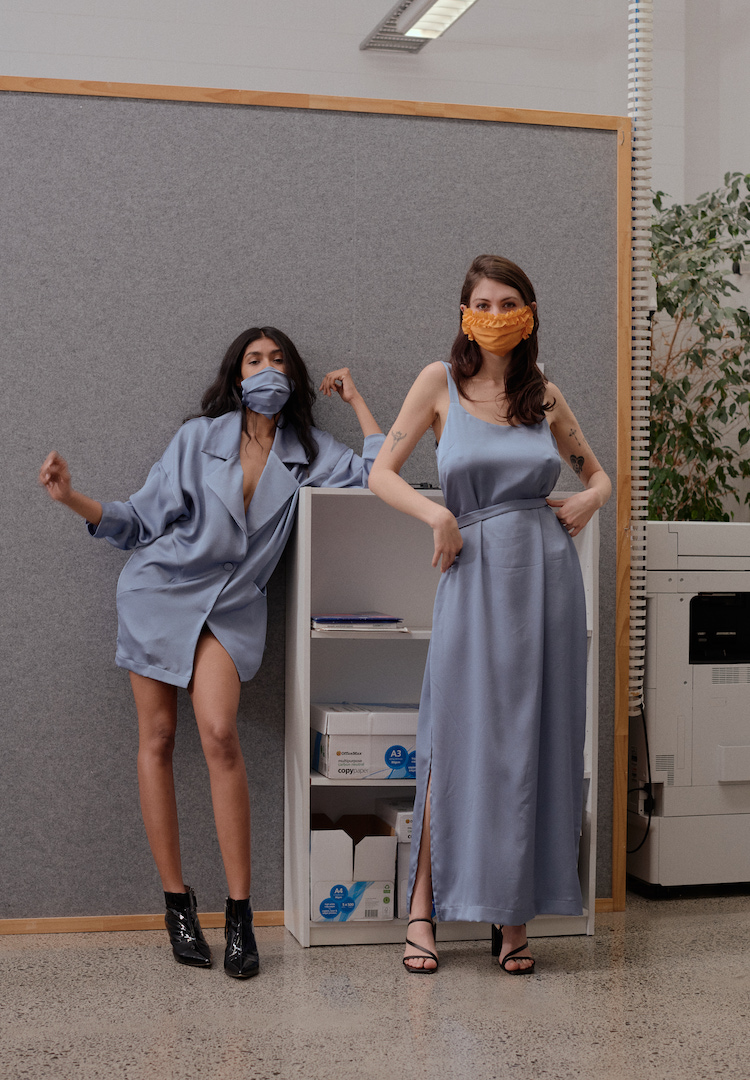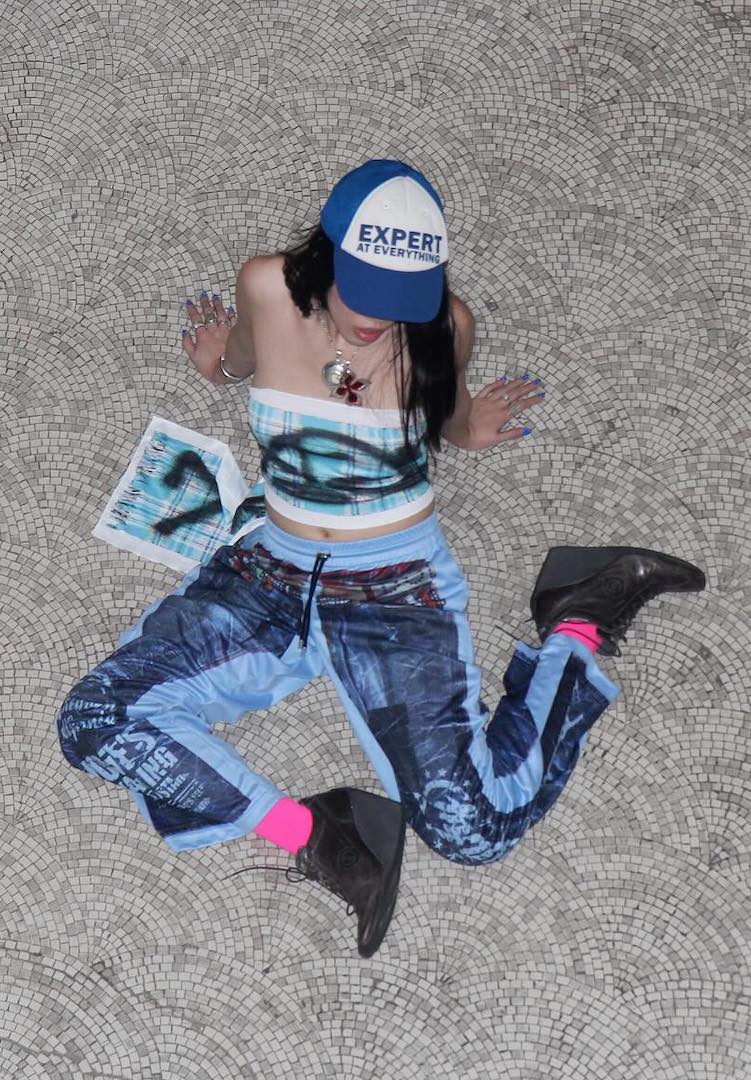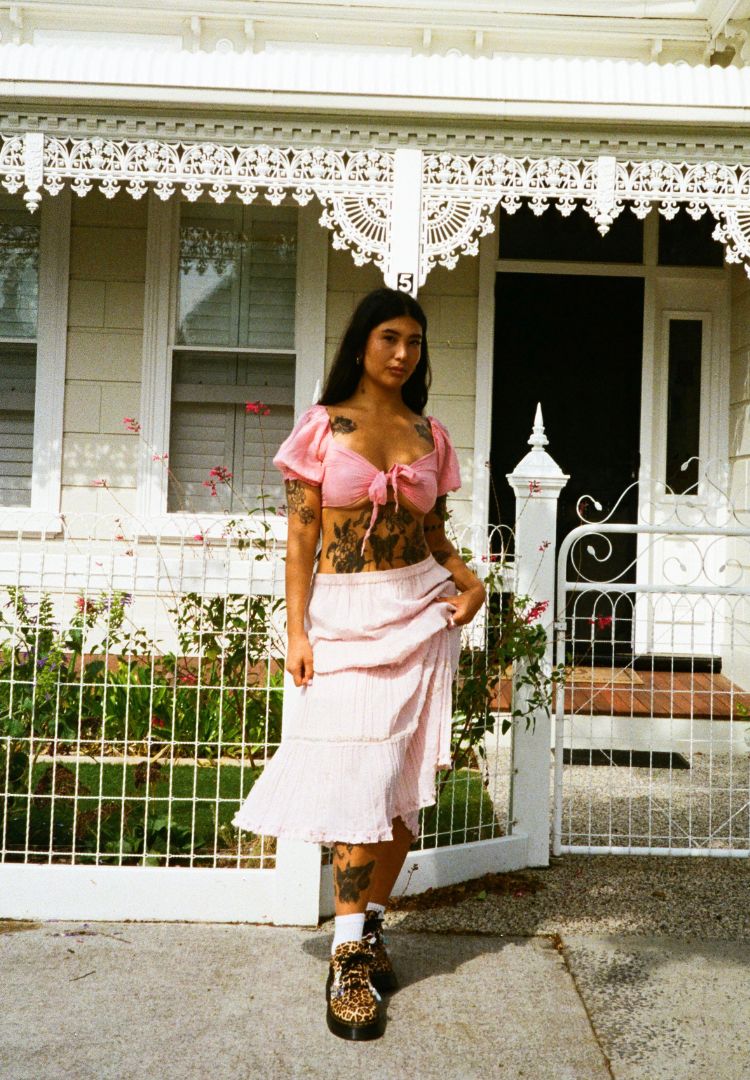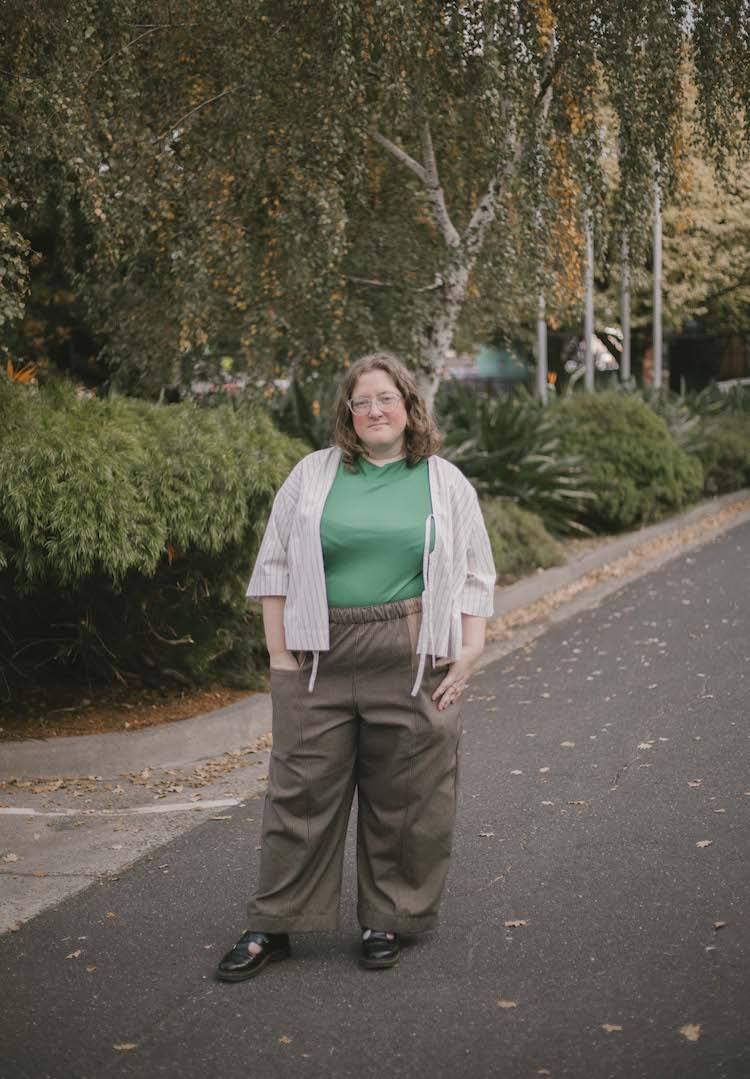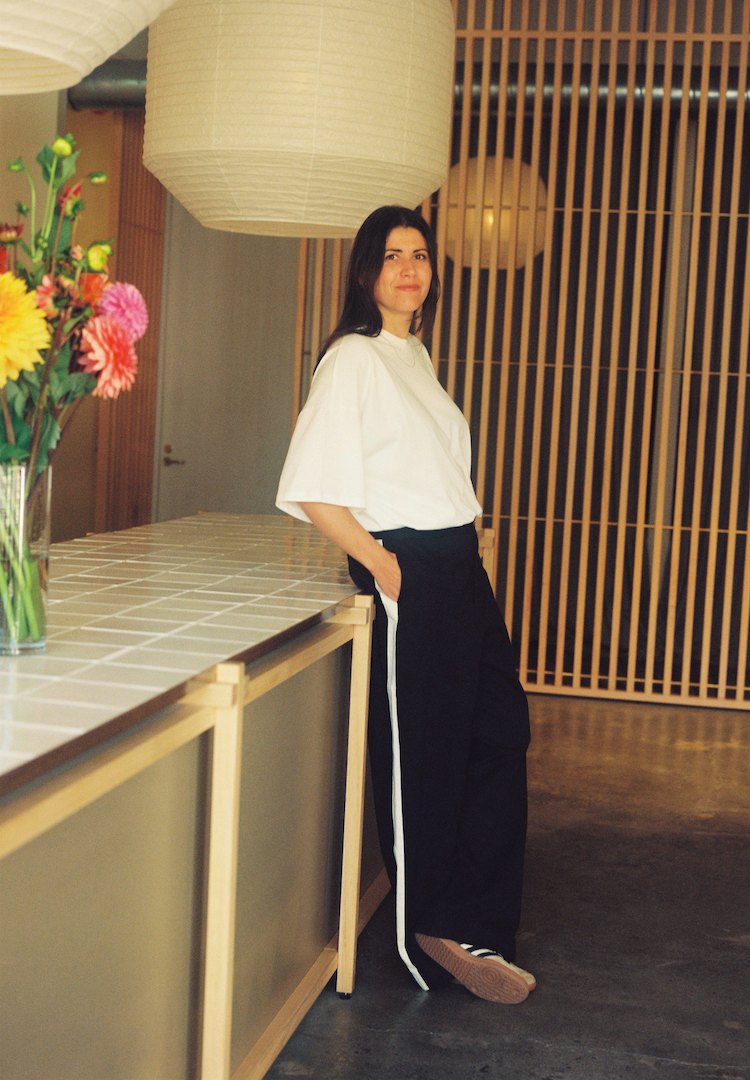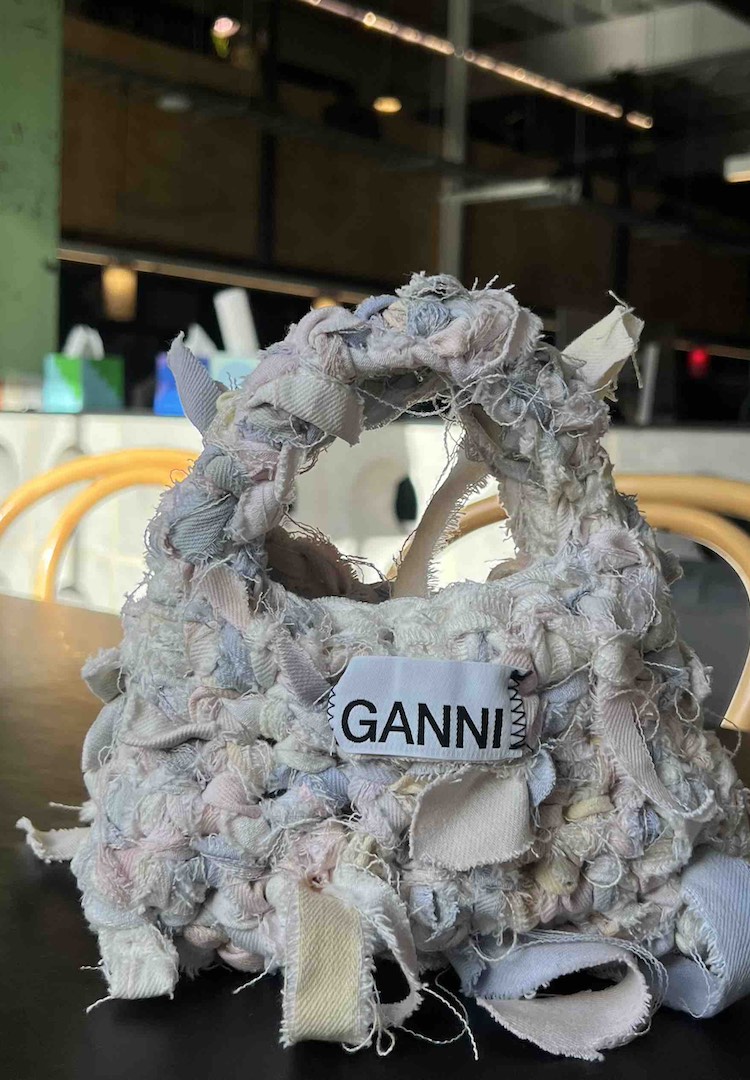Designers are now selling intellectual property instead of clothing, in the name of sustainable fashion
IMAGES VIA LIAM
WORDS BY JASMINE WALLIS
Could DIY be the future of sustainable fashion?
Earlier this year, as the world went into the first round of COVID-19 lockdowns, Harry Styles fans found themselves with some extra time on their hands.
First seen at a performance on The Today Show, a colourful cardigan worn by the singer began trending on TikTok. Retailing at over $2000, the original cardigan by British designer JW Anderson isn’t financially accessible for many Harry stans, so they created their own.
After seeing the popularity of the DIY cardigan, head designer Jonathan Anderson released the garment’s pattern to the public saying in a statement: “I am so impressed and incredibly humbled by this trend and everyone knitting the cardigan. I really wanted to show our appreciation so we are sharing the pattern with everyone. Keep it up!”
JW Anderson isn’t the only fashion label to give away it’s intellectual property. Described as “the global authority on wool”, The Woolmark Company has a page on its website dedicated to giving away free designer patterns. Created by winners of the International Woolmark Prize, the five free sewing, crocheting and knitting patterns encourage people at home to upskill and make their own clothes.
Knowing that we should be buying less and mending what we already own, is giving away or selling your intellectual property the future of fashion for design houses?
One brand that is selling patterns rather than pieces in its latest collection is Liam. Founded by Emily Miller-Sharma in 2011 and the sister brand of designer label Ruby, it was during New Zealand’s lockdown that the designer remembered the power of making clothing by hand.
After using embroidery to calm her lockdown-weary mind and only having access to the items she had in her cupboard, Emily came up with the idea for Liam Patterns and the collection What Have I Got?, a release of sewing patterns that customers buy to then make themselves at home.
“I started making my own clothes when I was 13. I spent years sprawled across my bedroom floor cutting, tracing, stitching and ripping seams. I’ve learned about making beautifully finished and considered collections with Liam, and how to put them into a beautiful retail store,” Emily tells me.
“With this collection of patterns though, it’s a whole new thing, but also something I feel like I know so well.”
When you buy one of the sixteen pieces from Liam Patterns, you’re sent the garment pattern paper (you can choose from beginner, intermediate and advanced skill levels) and a Liam garment label to sew on yourself. All of the deconstructed items arrive in envelopes made from the waste (or the by-product) of sawn timber production from Radiata Pine forests in the North Island of New Zealand.
While this is all well thought out and environmentally conscious, I ask Emily whether this is sustainable or whether it’s simply putting the onus back onto the customer to create more products and materials rather than the design house.
“One way of making sure you’re not contributing to more production is to go to op shops and get Sound of Music on it, look for vintage sheets, duvet covers or curtains. The more people who are working together, asking for the same thing, the more progress there is towards a sustainable future. So, the more home sewers who are asking for sustainable fabrics the better!”
Emily’s collection of patterns harks back to previous generations of ‘make-do and mend’. As a designer and ultimately a contributor to fashion consumption, Emily found herself looking for answers to the complex questions around sustainability.
“A useful tool for me is to look to how my grandmother and great grandmothers’ generations lived, used and consumed. I’m convinced that so many of the answers are actually sitting right there in our history, we just need to connect with it,” Emily says.
“My ancestors made their own clothes. It took them time. As a result, they valued their clothes more, took care of them, washed them more carefully, and mended them so they could be worn and kept beautiful for a long time.”
When asked what she hopes to achieve with the unique pattern release, Emily says, “In addition to wanting to share the experience of joy I get from playing with colour, texture and shape, I wanted our customers to experience the level of skill it takes to sew something. My thinking was that if more of us understand this, clothing, in general, will be valued more, and we will waste less.”
While it may take a while before making your own clothing is the norm again, Emily hopes that the future of fashion is circular, environmentally-neutral yet still expressive and joyful. I end our interview by asking the designer if releasing her intellectual property in the name of sustainability will continue in future collections.
“Whether this is something for the future of Liam? Yes, absolutely this is my hope and intention. For me, I have done this huge piece of work and I have put it out into the world… I need to listen to hear if that is what the world wants.”

